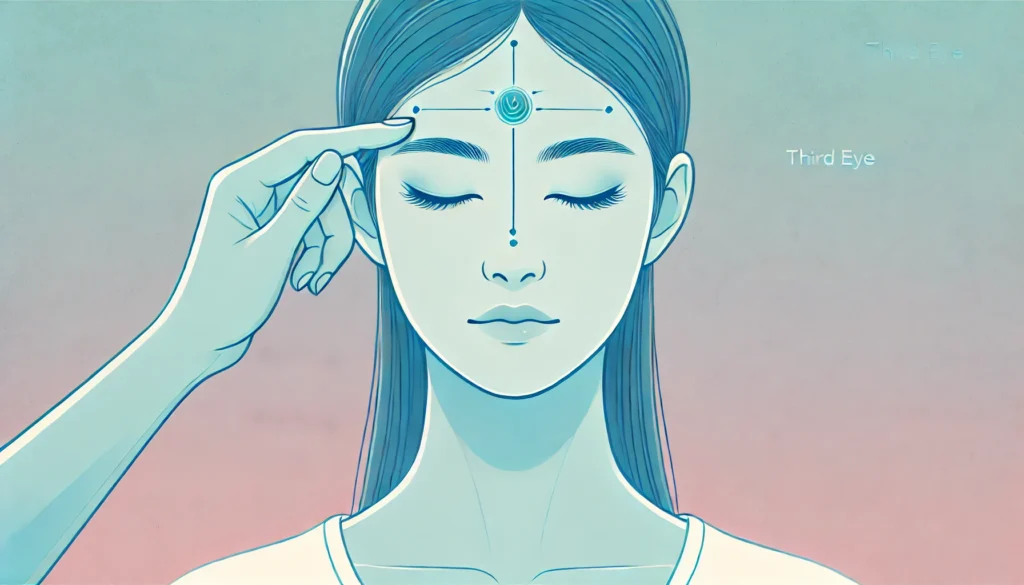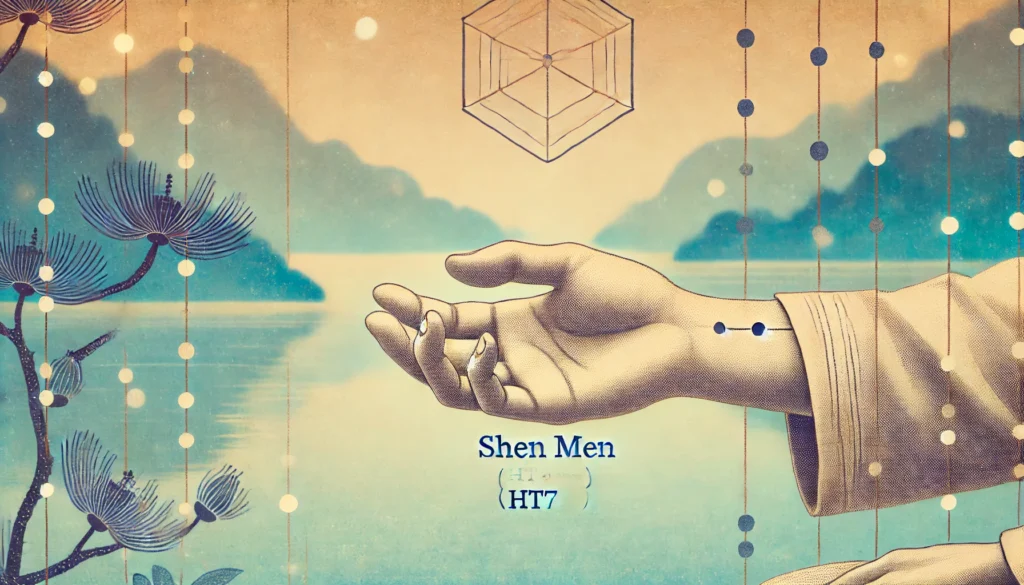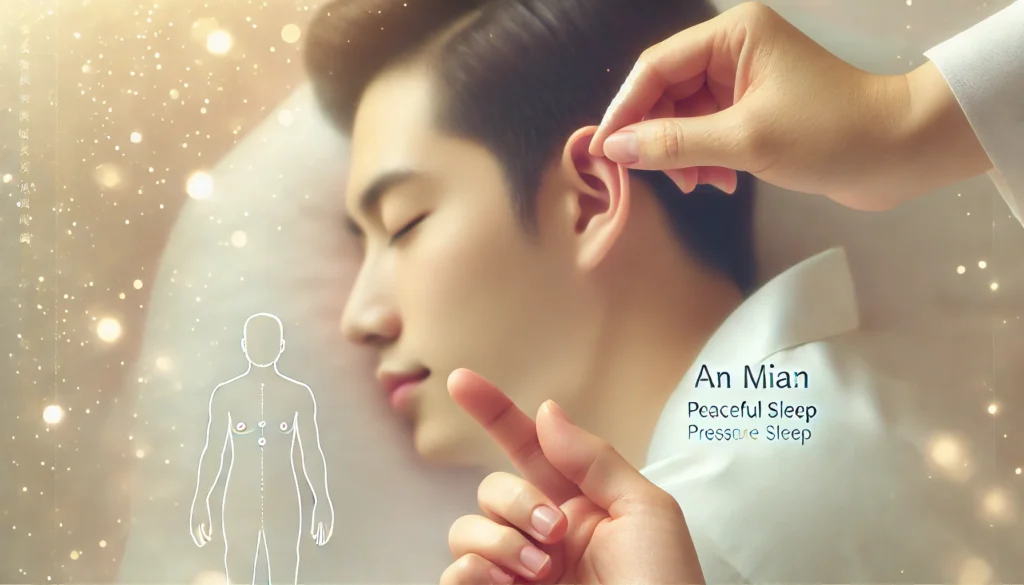Have you ever experienced that sudden wave of relaxation after a gentle massage or felt a mysterious release of tension when your temples were rubbed during a headache? These sensations aren’t just serendipitous occurrences; they stem from the age-old practice of manipulating pressure points on the human body. Today, let’s delve into the fascinating world of pressure points, their locations, and how they can be harnessed for stress relief and overall wellness.
You may also like: Stress Relief: Sentences to Calm Your Mind
Understanding Pressure Points
Pressure points, known in traditional Chinese medicine as acupoints, are specific areas on the body where energy pathways or meridians converge. These points are believed to be highly sensitive and can be stimulated through techniques such as acupuncture and acupressure to promote healing and relaxation.
The Concept of Energy Pathways
In traditional Chinese medicine, meridians are seen as channels that circulate life energy, or Qi, throughout the body. The concept of Qi is central to understanding how pressure points work. When Qi flows freely, the body is in a state of balance and health. However, when there are blockages or imbalances, it can lead to discomfort or illness. Acupoints act as gateways to influence this flow, allowing practitioners to restore balance.
Western Medicine’s Perspective
While Western medicine acknowledges the effectiveness of these techniques in stress relief and pain management, it often attributes their success to neurophysiological responses rather than energy flow. Research suggests that stimulating pressure points may release endorphins, the body’s natural painkillers, and increase blood circulation. This physiological response can explain the reduction in pain and stress observed in patients undergoing acupressure or acupuncture treatments.
Cultural Acceptance and Adaptation
Regardless of the interpretation, the benefits of pressure point therapy are widely recognized and embraced by many cultures worldwide. From ancient practices in Asia to modern wellness trends in the West, the use of pressure points has transcended cultural boundaries. Each culture may have its own unique approach and understanding, but the core idea remains the same: manipulating these points can lead to enhanced well-being.

Key Pressure Point Locations
The Science Behind Acupressure and Acupuncture
Both acupressure and acupuncture focus on manipulating specific pressure points to alleviate various ailments. Acupuncture involves inserting fine needles into these points, while acupressure uses physical pressure from hands, elbows, or devices. Understanding where these pressure points are located is the first step in unlocking their potential.
Mechanisms of Action
Acupuncture and acupressure are believed to stimulate the nervous system, triggering the release of neurotransmitters and hormones. These chemicals play a role in pain modulation and mood regulation, providing a scientific basis for the calming and pain-relieving effects of these therapies. Furthermore, research continues to explore how these techniques might influence the immune system and inflammatory responses, offering potential for broader therapeutic applications.
Training and Expertise
For effective treatment, practitioners undergo extensive training to learn the precise locations and functions of pressure points. This education includes understanding human anatomy, the meridian system, and the appropriate techniques for stimulation. Skilled practitioners can tailor their approach to the individual needs of each patient, ensuring that they receive the most beneficial treatment possible.
Comparative Studies
Numerous studies have compared the efficacy of acupuncture and acupressure with conventional medical treatments. While results vary, many patients report significant improvements in symptoms such as chronic pain, anxiety, and insomnia. These findings support the integration of pressure point therapies into broader healthcare practices, offering patients additional options for managing their health.
Commonly Used Pressure Points for Stress Relief
- Yintang (Third Eye Point): Located between the eyebrows, this point is often used in practices aimed at reducing anxiety and promoting relaxation.
- Emotional Calmness: Stimulating the Yintang is said to calm the spirit and clear the mind, making it a popular choice for meditation and stress reduction practices.
- Enhanced Focus: Beyond relaxation, this point is also believed to enhance concentration and mental clarity, offering a dual benefit for those seeking both calmness and cognitive enhancement.
- Cultural Significance: The Third Eye has symbolic meanings in various cultures, often associated with intuition and insight, adding a spiritual dimension to its physical benefits.
- Hegu (LI4): Found on the hand, between the thumb and index finger, this point is frequently targeted to relieve headaches and stress.
- Pain Relief: Known for its potent effects on pain, LI4 is commonly used in conjunction with other points to address headaches, migraines, and dental pain.
- Immune Boosting: Some practitioners believe that stimulating Hegu can enhance the immune system, providing an additional layer of health protection.
- Labor and Delivery: In traditional practices, this point is occasionally used to promote labor, although it should be approached with caution and professional guidance.
- Shen Men (HT7): Situated on the wrist, it is known for its calming effects on the mind and body.
- Heart Health: In addition to stress relief, HT7 is associated with heart health in Chinese medicine, reflecting its name, which translates to “Spirit Gate.”
- Sleep Improvement: This point is frequently used in protocols aimed at improving sleep quality and reducing insomnia, offering a natural remedy for restless nights.
- Emotional Balance: By promoting a sense of tranquility, Shen Men can help stabilize emotions, making it valuable for individuals facing emotional upheaval.
- An Mian (Peaceful Sleep): Behind the ear, this point is often utilized to improve sleep quality and reduce anxiety.
- Relaxation Techniques: An Mian is typically incorporated into broader relaxation routines, including massage and acupressure, to enhance its calming effects.
- Sleep Disorders: This point is specifically targeted in treatments for sleep disorders, providing a non-pharmacological option for those struggling with chronic insomnia.
- Anxiety Reduction: The soothing impact of An Mian extends beyond sleep, offering relief from anxiety symptoms during waking hours as well.
Chest Pressure Points for Anxiety
The chest is home to several significant acupoints that can be used to manage anxiety and stress. The Ren 17 point, located at the center of the chest, is a prime example. It is believed to facilitate emotional balance and improve respiratory functions, making it a go-to pressure point for anxiety relief.
Ren 17’s Role in Emotional Well-being
Ren 17, also known as the “Sea of Tranquility,” is thought to harmonize emotions, providing a centering effect that helps individuals manage stress and anxiety. By opening up the chest and promoting deep breathing, it supports both physical and emotional release.
Enhancing Respiratory Functions
Beyond emotional benefits, Ren 17 is associated with improved respiratory functions. This can be particularly beneficial for individuals experiencing anxiety-related breathing difficulties, offering a holistic approach to both emotional and physical symptoms.
Incorporating into Daily Practice
For those looking to incorporate pressure point therapy into their daily routine, Ren 17 can be gently pressed during moments of stress or included as part of a meditation or relaxation practice. Consistent use may enhance its benefits, promoting a state of calm over time.

The Historical Context of Pressure Points
The concept of pressure points dates back thousands of years, deeply rooted in the traditions of Chinese medicine. Historical texts, such as the Huangdi Neijing (The Yellow Emperor’s Classic of Internal Medicine), outline the meridian system and describe how manipulating these pathways can influence health.
Origins in Ancient Medicine
In ancient China, the study of pressure points was integral to understanding human health and disease. The Huangdi Neijing, one of the earliest medical texts, provided a comprehensive framework for diagnosing and treating illnesses through meridian theory. This text laid the foundation for acupuncture and acupressure, establishing principles that have endured for millennia.
Dissemination Through Trade
As trade routes expanded, knowledge of these practices spread, influencing other cultures and contributing to the development of diverse therapeutic techniques. The Silk Road, in particular, facilitated the exchange of medical knowledge, allowing the principles of pressure point therapy to reach as far as the Middle East and Europe, where they were adapted into local healing traditions.
Modern Reinterpretations
Despite advancements in modern medicine, the efficacy of these ancient practices remains a subject of intrigue and research. In recent years, there has been a resurgence of interest in traditional methods, leading to new interpretations and adaptations in light of contemporary scientific understanding. This blending of ancient wisdom and modern science continues to enrich the field of complementary and alternative medicine.
Modern Applications and Trends
Integrative Medicine and Pressure Points
In today’s health and wellness landscape, there’s an increasing trend towards integrative medicine, where traditional practices like acupuncture and acupressure are combined with modern medical treatments. This approach seeks to address the holistic needs of patients, offering more personalized and comprehensive care.
Holistic Health Approaches
Integrative medicine recognizes the importance of treating the whole person, not just the symptoms. By combining pressure point therapies with conventional treatments, healthcare providers can offer a more holistic approach that considers physical, emotional, and spiritual dimensions of health.
Tailored Treatment Plans
Practitioners in integrative medicine often develop customized treatment plans, incorporating pressure point therapies alongside dietary recommendations, physical activity, and stress management techniques. This personalized care aims to empower patients, encouraging them to take an active role in their healing process.
Growing Acceptance in Healthcare
As research continues to support the efficacy of pressure point therapies, their acceptance within mainstream healthcare is growing. Many hospitals and clinics now offer acupuncture and acupressure as part of their complementary services, reflecting a broader shift towards embracing traditional healing modalities in modern practice.
Pressure Points in Technology
Innovations in wearable technology are also incorporating pressure point therapy. Devices that simulate acupressure through targeted vibrations are becoming popular, offering users an on-the-go solution for stress and anxiety management.
Wearable Acupressure Devices
These devices are designed to apply gentle pressure or vibrations to specific acupoints, providing a convenient way for users to experience the benefits of acupressure throughout the day. They can be worn discreetly under clothing, allowing individuals to manage stress without interrupting their daily activities.
Apps and Digital Platforms
In addition to physical devices, there are numerous apps and digital platforms offering guided acupressure sessions and tutorials. These resources empower users to learn and practice self-acupressure techniques, making the benefits of pressure point therapy more accessible to a wider audience.
The Future of Tech-Enhanced Therapies
As technology continues to advance, the integration of pressure point therapy into digital health solutions is likely to expand. Future innovations may include AI-driven personalized acupressure programs, virtual reality experiences, and enhanced biofeedback mechanisms, further revolutionizing the way we approach stress and wellness.
Practical Advice for Using Pressure Points
Self-Acupressure Techniques
For those interested in self-care, learning basic acupressure techniques can be an empowering way to manage stress. Here’s a simple guide to get you started:
- Identify the Pressure Point: Use reliable diagrams or consult a professional to accurately locate the points.
- Educational Resources: Books, online courses, and workshops can provide valuable information on identifying and understanding pressure points. Consider starting with beginner-friendly resources to build a solid foundation.
- Professional Guidance: If you’re unsure about locating pressure points, consulting a professional can provide clarity and confidence. Many practitioners offer introductory sessions focused on teaching self-acupressure techniques.
- Practice and Patience: Accurately identifying pressure points takes practice. Be patient with yourself as you learn, and remember that consistency will improve your skill over time.
- Apply Gentle Pressure: Use your thumb or fingers to apply steady, circular pressure for 1-2 minutes.
- Pressure and Sensitivity: Start with gentle pressure and gradually increase if comfortable. Each individual has different sensitivity levels, so it’s important to listen to your body and adjust accordingly.
- Circular Motion Technique: Using a circular motion while applying pressure can enhance the stimulation of the acupoint, improving the overall effectiveness of the practice.
- Regular Practice: Make acupressure a regular part of your self-care routine. Consistent practice can lead to more pronounced benefits and contribute to long-term well-being.
- Focus on Breathing: While applying pressure, breathe deeply and slowly to enhance the relaxation effect.
- Mindful Breathing: Pairing acupressure with mindful breathing can create a synergistic effect, deepening relaxation and promoting a state of calmness.
- Breathing Exercises: Incorporate specific breathing exercises, such as diaphragmatic breathing or alternate nostril breathing, to further enhance the therapeutic impact.
- Awareness and Presence: Stay present and aware during the practice, focusing on the sensations and the rhythm of your breath. This mindfulness can amplify the healing potential of acupressure.
- Be Consistent: Regular practice can enhance the benefits and promote long-term well-being.
- Routine Development: Integrate acupressure into your daily routine, perhaps as part of a morning ritual or bedtime routine, to create a habit that supports sustained well-being.
- Tracking Progress: Keep a journal of your acupressure experiences, noting any changes in stress levels, mood, or physical symptoms. This can help you track progress and refine your approach over time.
- Adapting to Needs: As you become more familiar with acupressure, feel free to adapt your practice to address specific needs or goals, whether it’s stress reduction, pain relief, or emotional balance.
Seeking Professional Help
While self-acupressure is effective for minor stress relief, chronic issues may require professional intervention. Acupuncturists and massage therapists are trained to apply these techniques safely and effectively, ensuring optimal outcomes.
Benefits of Professional Treatment
Professionals bring a depth of knowledge and experience that can enhance the therapeutic effects of pressure point therapy. They can diagnose and treat complex conditions, tailoring their approach to suit individual needs and ensuring that each session is both safe and effective.
Finding Qualified Practitioners
When seeking professional help, it’s important to find a qualified practitioner who is licensed and experienced in acupuncture or acupressure. Research their credentials, read reviews, and consider scheduling a consultation to discuss your needs and expectations.
Combining Therapies for Enhanced Results
In some cases, combining professional pressure point therapy with other treatments, such as physical therapy or counseling, can provide a comprehensive approach to health and wellness. Discussing this possibility with your healthcare provider can help you create a coordinated treatment plan that maximizes benefits.

Future Implications in Health and Wellness
As research continues to validate the benefits of pressure point therapy, its integration into mainstream healthcare is likely to grow. Future studies may further elucidate the mechanisms behind its effects, potentially leading to new therapeutic applications and innovations.
Expanding Research Horizons
Ongoing research is exploring the potential of pressure point therapy in treating a wide range of conditions beyond stress and pain management. Studies are investigating its role in supporting immune function, enhancing mental health, and even influencing cognitive performance. As our understanding deepens, new applications and treatment protocols may emerge, broadening the scope of pressure point therapy in healthcare.
Educational Opportunities
As interest in pressure point therapy grows, educational programs and training opportunities are expanding. Universities and healthcare institutions are increasingly offering courses in acupuncture and acupressure, helping to train the next generation of practitioners. This investment in education is crucial for ensuring that pressure point therapies are delivered safely and effectively, maintaining high standards of care.
Integration with Emerging Technologies
The intersection of pressure point therapy and emerging technologies offers exciting possibilities for the future. Innovations such as virtual reality, biofeedback, and wearable devices are being explored as tools to enhance the delivery and experience of pressure point therapies. These technological advancements have the potential to make these therapies more accessible and effective, reaching a wider audience and providing new avenues for health and wellness.
Conclusion
The power of pressure points lies in their ability to harmonize the body’s energy, alleviate stress, and promote healing. Whether through traditional practices like acupuncture or modern adaptations, these techniques offer valuable tools for those seeking a balanced and healthy lifestyle. As we continue to explore and understand these ancient principles, the potential for enhancing our well-being becomes increasingly promising.
Embark on your journey with pressure points today, and discover the profound impact they can have on your health and wellness. Through education, practice, and professional guidance, you can unlock the transformative power of these ancient techniques and enjoy the benefits they bring to your life.
Further Reading:
Acupressure for Pain and Headaches
7 Acupressure Points for Stress + Anxiety Relief
Important Note: The information contained in this article is for general informational purposes only, and should not be construed as health or medical advice, nor is it intended to diagnose, prevent, treat, or cure any disease or health condition. Before embarking on any diet, fitness regimen, or program of nutritional supplementation, it is advisable to consult your healthcare professional in order to determine its safety and probable efficacy in terms of your individual state of health.
Regarding Nutritional Supplements Or Other Non-Prescription Health Products: If any nutritional supplements or other non-prescription health products are mentioned in the foregoing article, any claims or statements made about them have not been evaluated by the U.S. Food and Drug Administration, and such nutritional supplements or other health products are not intended to diagnose, treat, cure, or prevent any disease.


